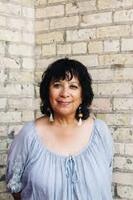 Lia Rivamonte on behalf of the Beloved Community Communications Team In a recent peace circle conducted via Zoom about how we might transform policing, it struck me how difficult it is to communicate from one screen to another. Not being able to read people’s faces or body language, it’s hard to gauge how others in the group are feeling because awkwardness is built into the platform. It was helpful, of course, to have such skilled facilitators as Karen Hering and Maura Williams, who are experienced in soliciting responses in large group settings. What follows are some of the thoughts I have about my digital peace circle experience. They reflect some of my first impressions only—with the emphasis on my.
We were all asked, “What makes us feel safe?” It is the question at the heart of the change we seek. It is a basic need as human beings to feel protected, to trust that those around us care about our safety and well-being. That those of us who have willingly taken on the responsibility for keeping the larger community from harm must not predetermine who among us is worth protecting, while automatically ascribing criminality to whole groups or individuals based on the color of their skin. And while it may be simplistic to attribute the reflexive violence that members of our police force employ to answer our calls for help, it does seem that no other alternatives are considered. Especially when they show up armed. Have we given too much power to an institution that can too easily be corrupted? Probably. But an institution is comprised of individuals who also share our vulnerability as human beings. How do we make sure we all feel safe? Admittedly, the evening session was not what I had anticipated — I was expecting to hear and possibly to contribute some “solutions” about how we might transform policing in our community. However, when speaking to a friend about the evening, I realized that it was just the beginning we need.
0 Comments
|
Topics
All
Beloved Community ResourcesUnity Justice Database
Team Dynamics House of Intersectionality Anti-Racism Resources in the Unity Libraries Collection Creative Writers of Color in Unity Libraries The History of Race Relations and Unity Church, 1850-2005 Archives
July 2024
Beloved Community Staff TeamThe Beloved Community Staff Team (BCST) strengthens and coordinates Unity’s antiracism and multicultural work, and provides opportunities for congregants and the church to grow into greater intercultural competency. We help the congregation ground itself in the understanding of antiracism and multiculturalism as a core part of faith formation. We support Unity’s efforts to expand our collective capacity to imagine and build the Beloved Community. Here, we share the stories of this journey — the struggles, the questions, and the collaborations — both at Unity and in the wider world.
The current members of the Beloved Community Staff Team include Rev. Kathleen Rolenz, Rev. KP Hong, Rev. Lara Cowtan, Drew Danielson, Laura Park, Lia Rivamonte and Angela Wilcox. |